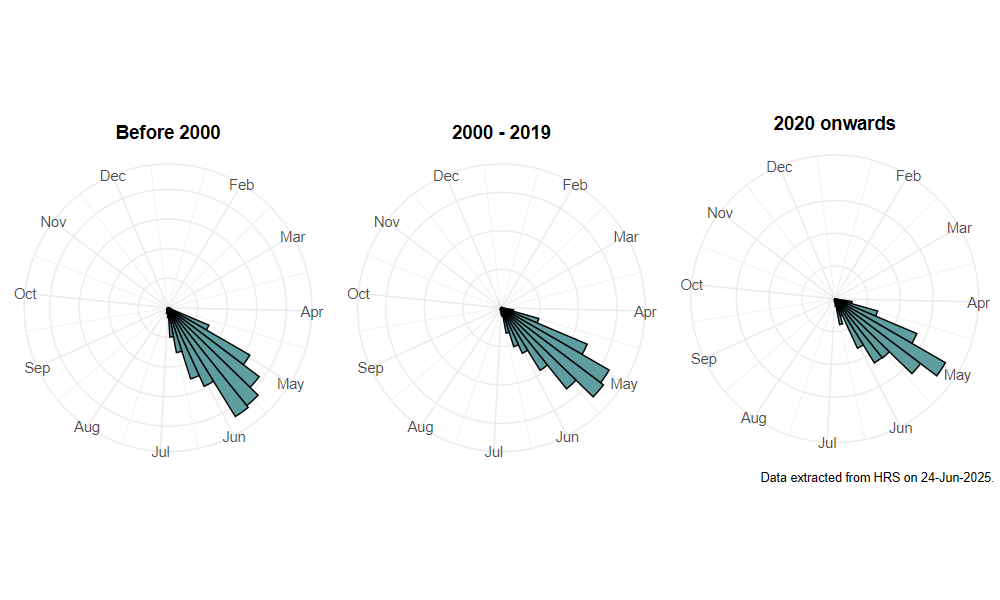Dasysyrphus venustus (Meigen, 1822)
Identification
Identification difficulty = 2. ![]()
![]() according to Ball & Morris, 20241
according to Ball & Morris, 20241
Synonymy
Syrphus venustus Meigen in Coe(1953)2. It has become clear that this is a species complex and species such as D. neovenustus Soszyński, Mielczarek & Tofilski, 2013 have been split off. More such splits are expected.
Biology
The larva is aphidophagous and arboreal, occurring on both coniferous and deciduous trees. It feeds nocturnally and rests near the aphid colony by day on twigs and branches. It is superbly camouflaged by dark colour patterns and body projections (see photograph in Rotheray, 19933). Adults are usually found near trees in woodland rides and along woodland edges, hedgerows and gardens. A wide range of flowers are visited, especially buttercups Ranunculus sp.
Flight period
The following plots show the number of unique records per week excluding those reported to be of immature stages.

Distribution
Widespread throughout Britain to northern Scotland, but more frequently reported from southern Britain and scarcer in the northern part of its range. These differences may be partially attributed to recorder effort but until very recently this species has been decidedly scarce.

Trends
The following plots show the Frescalo TFactor vs year and a map of the rescaled frequency (all records) for the species.
-
Ball, S., & Morris, R. (2024). Hoverflies of Britain and Ireland. WILDGuides (3rd ed.). Oxford: Princeton University Press. ↩
-
Coe, R. (1953). Diptera: Syrphidae. Handbooks for the Identification of British Insects, 10(1), 1–98. ↩
-
Rotheray, G. (1993). Colour guide to hoverfly larvae (Diptera, Syrphidae) in Britain and Europe. Dipterists Digest (first series), 9, 1–155. ↩